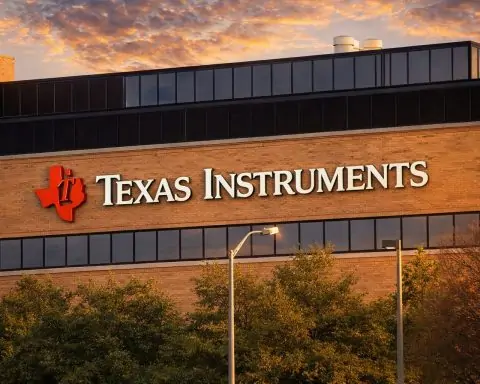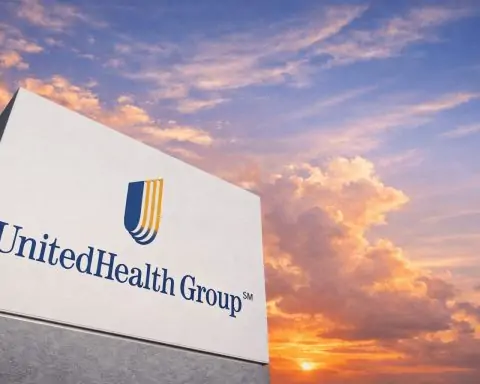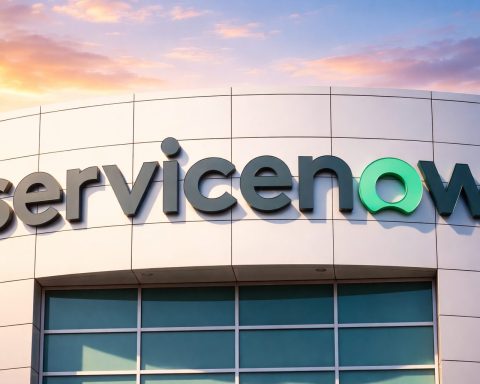- Major Teleradiology Contract: On Oct. 21, 2025 VSee Health announced a multi-year $10+ million teleradiology services deal with a premier Level 1 trauma hospital system [1]. Services began in June 2025 and this contract is expected to double VSee’s annual recurring revenue, with clauses that could add another $5M if certain targets are met [2].
- Stock Surge: The contract news sent VSEE shares soaring (~+75%) on Oct. 21. Trading opened around $0.48 (market cap ~$8.1M) and jumped to roughly $0.80–$0.86 intraday [3] [4]. ChartMill reported a 56.17% gap-up early Tuesday (Oct 21) to $0.76 [5]. Volume exploded to 226 million shares (vs. ~0.7M avg) [6] as retail traders piled in.
- Recent Results: In mid-October VSee filed its Q2 2025 10-Q (ending June 30). Revenue was $3.4M (+98% YoY) with gross margin ~47% [7]. Improved margins and client growth were attributed to its acquisition of iDoc Telehealth and expansion of services [8]. Management emphasized that “growing revenue and improved operational efficiencies” set a foundation for growth [9].
- NASDAQ Compliance: The company secured a Nasdaq extension to remain listed [10]. In September NASDAQ granted VSee more time (until Oct. 15) to file its delayed Q1/Q2 reports and until Dec. 1 to meet minimum equity rules [11]. VSee says it’s working closely with auditors to complete these filings.
- Analyst Sentiment: Analyst consensus is bullish. StockAnalysis notes a “Strong Buy” rating with a 12-month target of $5.00 [12]. Despite the rally, VSEE remains a penny stock (52-week range $0.455–$3.54 [13]) and highly volatile – analysts caution swings can be dramatic.
- Telehealth Tailwinds: Industry forecasts are robust – global telehealth and teleradiology markets are projected to grow ~20–25% annually over the next decade [14] [15]. VSee’s fully integrated video/EHR platform is designed to meet this demand. The company already counts clients like NASA, U.S. HHS, McKesson and DaVita [16].
- Risks & Outlook: VSee’s small market cap (~$13M now) and penny-stock status mean high risk. Regulatory compliance (HIPAA, billing rules), cash burn and execution risk (delivering promised services) are real concerns. As one market commentator noted, “small-cap stocks like VSee… can swing wilder than a kid on a sugar rush,” so gains may be quickly reversed on any setbacks [17]. Nevertheless, the new contract has “my attention,” traders say – if VSee can parlay it into sustained growth, the share price could climb much higher [18] [19].
VSee’s Game-Changing Teleradiology Deal
On Oct. 21, 2025 VSee Health (NASDAQ: VSEE) announced a “landmark” multi-year teleradiology contract with a major Level 1 trauma hospital system [20]. Under the deal (executed May 7, 2025, services since June), VSee will provide 24/7 remote radiology interpretations across a network of hospitals. The company projects $10 million in gross revenue over two years from this contract, with potential to add $5+ million in bonuses or expansions [21]. Management says this “blockbuster contract” will double annual recurring revenue and unlock new opportunities in telehealth [22] [23]. Co-CEO Dr. Imo Aisiku enthused: “Doubling our annual recurring revenue is just the beginning… [this deal] opens doors to a pipeline of future contracts with top-tier healthcare systems.” [24] [25].
This announcement underscores VSee’s recent momentum in teleradiology. In early September the company revealed it had rapidly expanded an existing pilot: growing from 3 to 17 hospitals in one network within months, for an estimated $3.0M per year of recurring revenue [26] [27]. VSee’s strategy is to integrate its cloud imaging platform with hospital systems, enabling real-time X-ray/MRI/CT reads. The new Level 1 hospital system is likely the same multi-hospital chain, further validating VSee’s teleradiology offering [28].
Industry data backs this direction: post-pandemic telehealth use has not only endured but accelerated. Global telemedicine spending is forecast to expand at ~20–25% CAGR through the 2020s [29] [30]. Teleradiology – the practice of remote imaging reads – is seen as one of the fastest-growing segments, driven by hospital demands for round‑the‑clock specialist coverage. As StreetInsider noted, VSee is “positioned to pursue additional partnerships in the teleradiology sector, citing industry growth projections of over 20%” [31]. In short, analysts see the $10M deal as proof of concept: if VSee can deliver results at one big system, more contracts may follow.
Stock Surge and Recent Market Action
News of the teleradiology contract promptly lit up VSEE’s stock. On Tuesday (Oct. 21), shares jumped roughly 75% intraday. Before the announcement, VSEE traded around $0.48 (Oct 20 close, ~8.1M market cap) [32] [33]. By mid-morning Oct. 21, it spiked to ~$0.80–$0.86 [34] [35]. ChartMill tracked a 56.17% gap up to $0.76 on heavy volume, noting the press release as the catalyst [36]. StockAnalysis reports an open of $0.5807 and intraday range up to $0.9950 on Oct 21 [37]. Trading volume exceeded 200 million shares – extraordinary for a Nasdaq microcap – as speculative traders piled on.
For perspective, VSee had been lightly traded and flat until recently. On Oct 17 (the 10-Q filing date), shares closed about $0.48 [38]. The sharp 75% rally on Oct 21 brought market cap to ~$13–14M. (By contrast, larger telehealth peers like Teladoc or Amwell trade at billions of market cap.) Technical watchers note VSEE is very high-risk: it’s a penny stock with a tiny float, meaning even small news can cause wild swings. One trading blog quipped, “This isn’t some random pump; it’s got real meat on the bones thanks to a fresh announcement”, but also warned “small-cap stocks like VSee… can swing wilder than a kid on a sugar rush” [39]. Indeed, the stock’s recent history shows volatility – the 52-week range is $0.455–$3.54 [40] and it has rallied over 70% on Oct 21 alone. Investors should be aware that such jumpy behavior often corrects fast if follow-on catalysts do not materialize.
Financials and Company Developments
The teleradiology news comes on the heels of VSee’s busy quarter. The company filed its Q2 2025 report on Oct. 17, confirming strong growth. Total revenue for Q2 was $3.4 million, up 98% versus Q2 2024 [41]. This doubling was largely attributed to VSee’s acquisition of iDoc Telehealth and ramping of its core telemedicine services. Gross margin improved to 47% (from 45%) as new service lines drove higher-margin sales [42]. Cash burn has narrowed: in H1 2025 VSee used $0.77M cash in operations, versus $2.59M in H1 2024 [43]. Management noted that “robust revenue growth, expanded customer relationships and operational progress” are laying a foundation for efficiency [44].
Alongside revenue growth, VSee has been working through regulatory hurdles. Since late 2024 the company had struggled to file its SEC reports on time and faced a Nasdaq delisting threat. In mid-September, Nasdaq approved VSee’s request for continued listing, giving it until Oct. 15 to file the Q1/Q2 10-Qs and until Dec. 1 to meet equity requirements [45]. The company says it “continues to work diligently” with auditors and expects to meet those conditions [46]. Getting back in compliance removes an overhang for investors. (Earlier in August, VSee had appealed a Nasdaq notice and in May received a warning about late filings.)
VSee’s milestones go beyond teleradiology. The company is also marketing AI-driven solutions. For example, in July it announced a new AI doctor‑notes feature that slashes documentation time 93% [47]. It is part of an R&D push to integrate AI into virtual care (e.g. AI-assisted assessments). Moreover, VSee has earned some notable partnerships over time – its press materials tout clients including NASA, McKesson, DaVita, and even the nation of Qatar [48] – though these tend to be in pilot or small-scale modes. Any future partnership with large hospital systems (beyond the current deal) would be a significant validation.
Expert Views and Outlook
Market analysts and investors are divided. On one hand, the $10M contract is seen as a catalyst that could unlock big upside. A StreetInsider writeup emphasized that VSee’s CEO called the deal “a game-changer for VSee Health” and that “doubling our annual recurring revenue is just the beginning” [49]. The company itself stresses that this win “validates our leadership in teleradiology” [50] and could spur “explosive growth” in shareholders’ value [51]. Industry analysts note that telehealth is attracting huge investment – the global market is forecast to exceed $455 billion by 2030 (Bloomberg Intelligence, etc.) – and that smaller players with niche platforms can shoot higher on successful contracts.
On the other hand, experts warn of caution. RagingBull columnist Jeff Williams (10+ years trading) urged readers to “zoom out” and remember the risks [52]. He pointed out that VSEE’s market cap (only a few million) leaves it in penny-stock territory, meaning volatility and speculation run wild [53]. VSee must still prove that it can deliver complex services at scale – any slip-ups in compliance, billing or patient outcomes could be costly. Regulatory risk is real: healthcare technology must comply with HIPAA privacy rules and government contracts are often subject to audits. As Williams notes, the telehealth space is crowded with giants (Teladoc, Amwell, etc.), and VSee will need flawless execution to win more big clients [54].
Technical analysts are similarly mixed. The sudden 75% rally has triggered some profit-taking calls, since VSEE is now trading near intraday highs. But some chart watchers see the strong breakout (with unusual volume) as bullish momentum. On Oct 21 ChartMill noted that traders were paying attention to VSEE’s gap-up (56%) among that day’s biggest movers [55]. As one market summary put it, “VSEE’s share price showed an impressive increase… earlier today the company had a press release” [56]. In plain terms, the news cycle is very short-term: retail traders may chase these moves, but longer-term investors will want to watch upcoming earnings and contract rollouts.
Looking ahead, Wall Street consensus remains optimistic in the aggregate. StockAnalysis lists VSEE as a “Strong Buy” with a $5.00 one-year target [57] (over 500% above today’s price). Of course, that figure probably assumes all current contracts expand and new deals flow in. No major Wall Street firm has issued a detailed research report on VSEE to our knowledge – the stock is too small. However, the surge suggests some retail analysts and newsletter writers are now bullish. For example, a Money tech blog noted the stock’s move “may have caught the attention” of traders looking for breakout penny stocks.
On the fundamentals side, investors will be watching VSee’s upcoming Q3 2025 report (filed after Oct 31). Because the teleradiology service started in June, Q3 revenue may start to reflect the new contract. That could provide confirmation of management’s projections. Balance sheet health will also be scrutinized: VSee has limited cash (the StockAnalysis snapshot notes net losses of $63.7M on $13.8M TTM revenue [58]) and some debt. On Oct. 20 the company disclosed it took a small secured note for $120K (due May 2026) to bolster liquidity [59], and it amended security agreements with its lender. These moves show it’s still raising capital cautiously, so future financing needs remain a watch item.
Conclusion: Caution Remains
In sum, VSee Health is facing a pivotal moment. The new teleradiology contract is tangible evidence that its platform can sell to big hospitals – something many startups in telehealth struggle to achieve. If VSee can reliably scale this service (and do the same at other systems), the company’s revenues and margins could grow significantly. That possibility explains the latest stock market exuberance. But investors should remember the flip side: VSEE is still a microcap with a checkered filing history and no steady profits. As a trader on StreetInsider put it, “Too soon to call” whether VSee will become a telehealth titan [60].
For now, VSee’s story will be one to watch closely. Its success will likely depend on execution of the current contract and landing more like it – factors beyond the stock’s current momentum. Given the high volatility, market watchers advise staying diversified and cautious. In plain terms: this rally is driven by one big announcement; investors should watch actual Q3 results and contract rollouts before deciding whether VSEE’s stock gains are sustainable [61] [62].
Sources: VSee Health press releases (via Accesswire) and financial filings [63] [64] [65]; news coverage from StreetInsider [66] [67]; stock data and analysis [68] [69]; market commentary [70] [71] [72]. These sources provide the latest details on VSEE’s deals, financials and market activity as of Oct. 21, 2025.
References
1. finviz.com, 2. finviz.com, 3. www.streetinsider.com, 4. www.chartmill.com, 5. www.chartmill.com, 6. stockanalysis.com, 7. finviz.com, 8. finviz.com, 9. finviz.com, 10. finviz.com, 11. finviz.com, 12. stockanalysis.com, 13. stockanalysis.com, 14. finviz.com, 15. www.streetinsider.com, 16. finviz.com, 17. ragingbull.com, 18. ragingbull.com, 19. www.streetinsider.com, 20. finviz.com, 21. finviz.com, 22. finviz.com, 23. www.streetinsider.com, 24. finviz.com, 25. www.streetinsider.com, 26. finviz.com, 27. finviz.com, 28. finviz.com, 29. finviz.com, 30. www.streetinsider.com, 31. www.streetinsider.com, 32. finviz.com, 33. www.streetinsider.com, 34. www.streetinsider.com, 35. www.chartmill.com, 36. www.chartmill.com, 37. stockanalysis.com, 38. finviz.com, 39. ragingbull.com, 40. stockanalysis.com, 41. finviz.com, 42. finviz.com, 43. finviz.com, 44. finviz.com, 45. finviz.com, 46. finviz.com, 47. finviz.com, 48. finviz.com, 49. www.streetinsider.com, 50. www.streetinsider.com, 51. finviz.com, 52. ragingbull.com, 53. ragingbull.com, 54. ragingbull.com, 55. www.chartmill.com, 56. www.chartmill.com, 57. stockanalysis.com, 58. stockanalysis.com, 59. www.sec.gov, 60. ragingbull.com, 61. ragingbull.com, 62. www.streetinsider.com, 63. finviz.com, 64. finviz.com, 65. finviz.com, 66. www.streetinsider.com, 67. www.streetinsider.com, 68. stockanalysis.com, 69. stockanalysis.com, 70. ragingbull.com, 71. ragingbull.com, 72. www.chartmill.com








